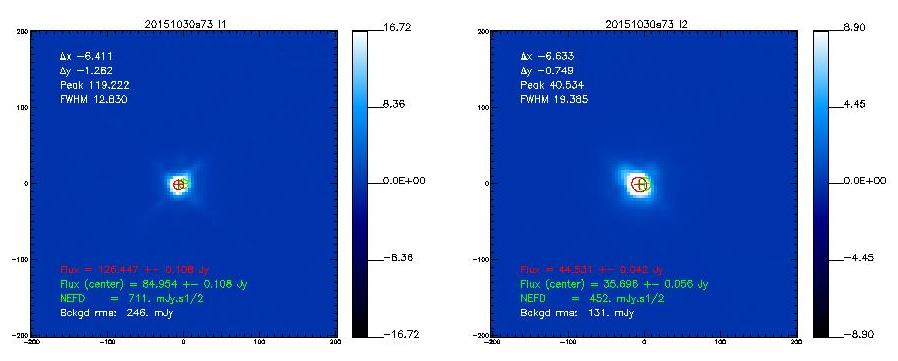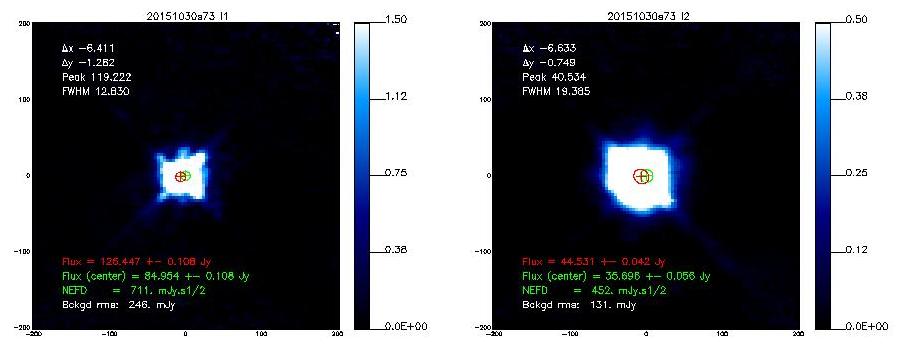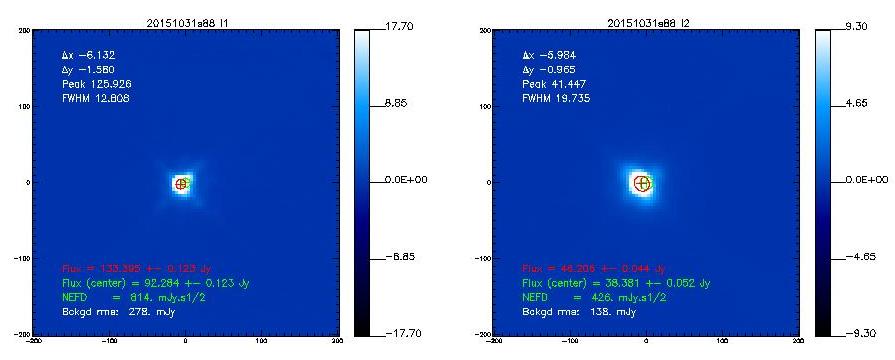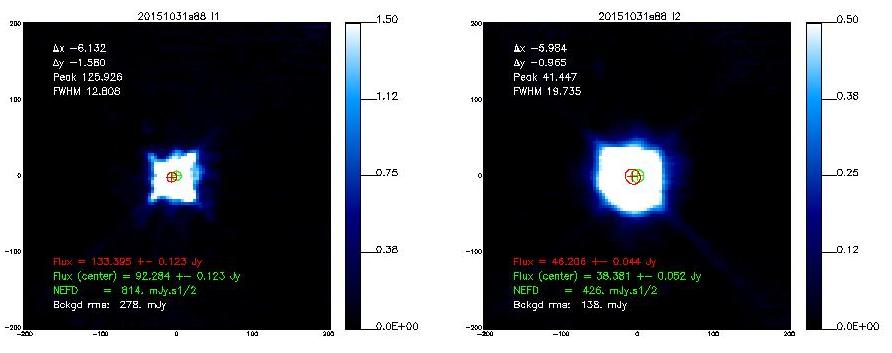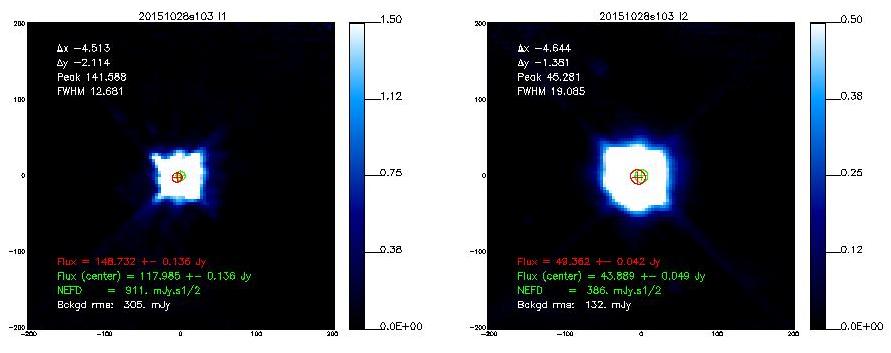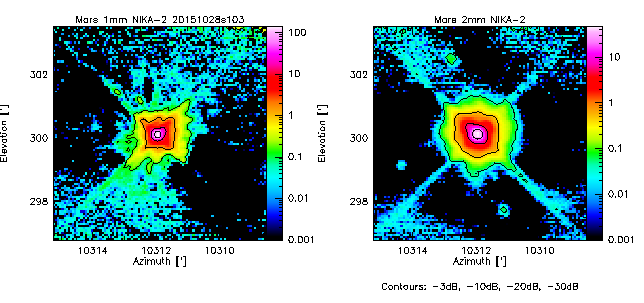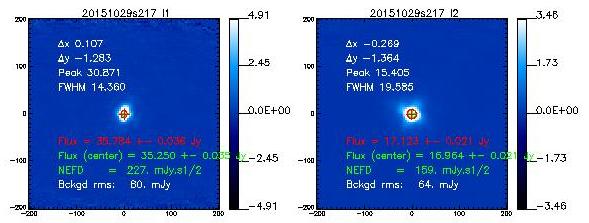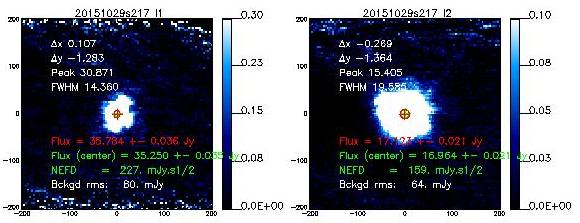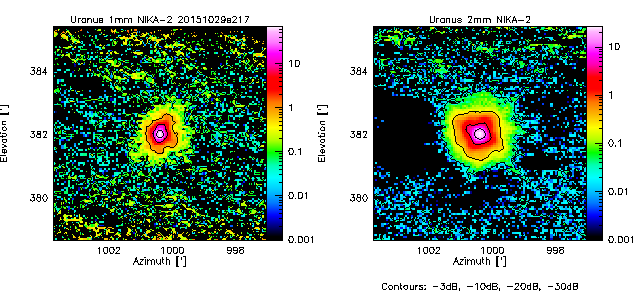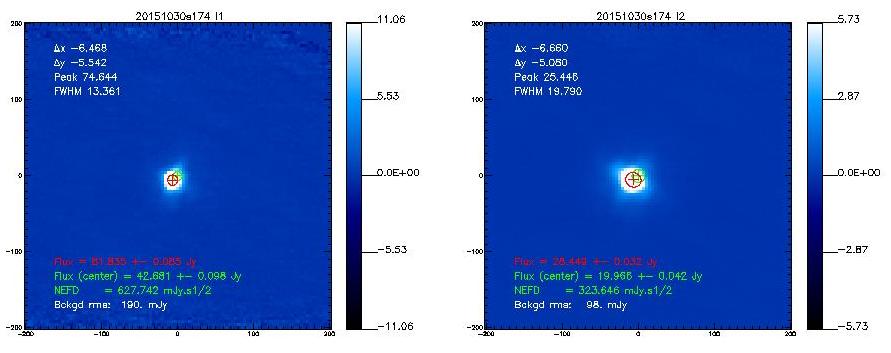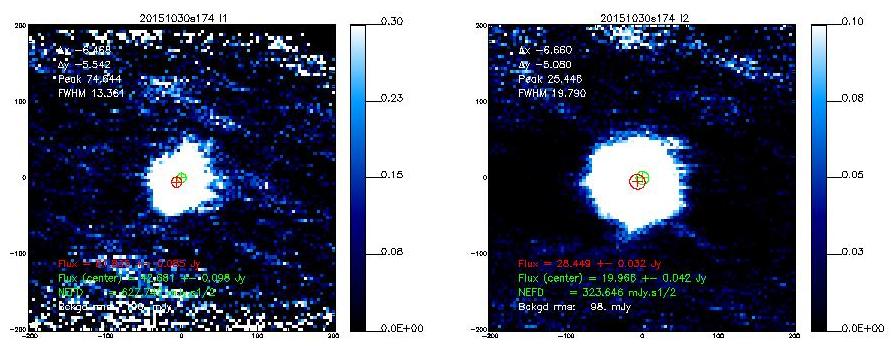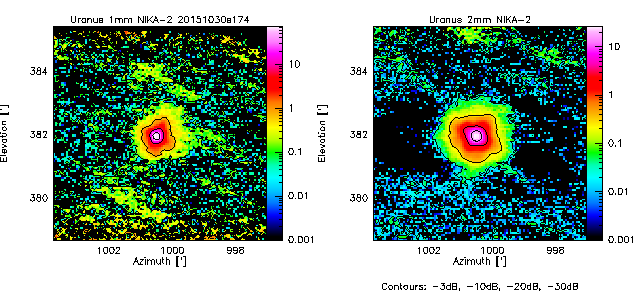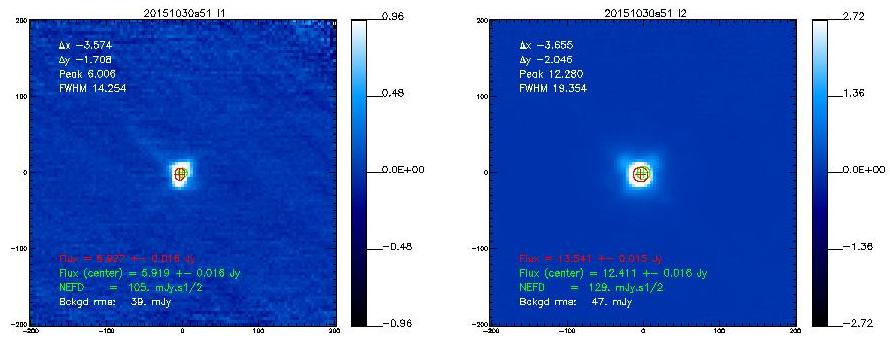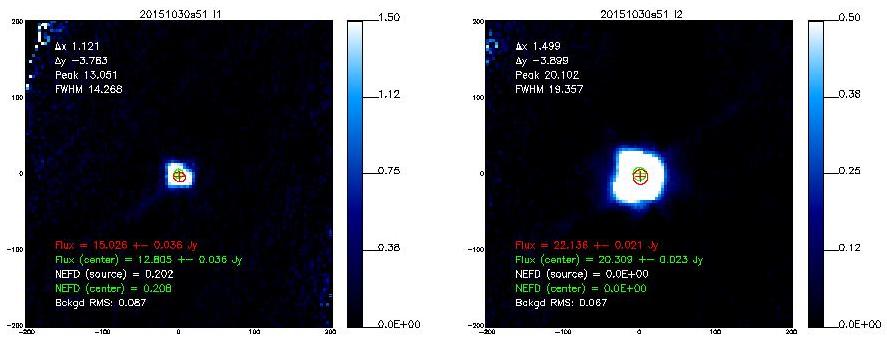|
Size: 3635
Comment:
|
Size: 5204
Comment:
|
| Deletions are marked like this. | Additions are marked like this. |
| Line 37: | Line 37: |
| {{attachment:Beam_Mars_20151030s73b.jpg}}{{attachment:Beam_Mars_20151030s73b_foot.jpg}} | {{attachment:Beam_Mars_20151030s73b.jpg||height=310}}{{attachment:Beam_Mars_20151030s73b_foot.jpg||height=310}} |
| Line 39: | Line 39: |
| {{attachment:beam20151030s73.png}} | {{attachment:beam20151030s73.png||height=370}} |
| Line 43: | Line 43: |
| {{attachment:Beam_Mars_20151031s88b.jpg}}{{attachment:Beam_Mars_20151031s88b_foot.jpg}} | {{attachment:Beam_Mars_20151031s88b.jpg||height=310}}{{attachment:Beam_Mars_20151031s88b_foot.jpg||height=310}} |
| Line 45: | Line 45: |
| {{attachment:beam20151031s88.png}} | {{attachment:beam20151031s88.png||height=370}} |
| Line 49: | Line 49: |
| {{attachment:Beam_Mars_20151028s103b.jpg}}{{attachment:Beam_Mars_20151028s103b_foot.jpg}} {{attachment:beam20151028s103.png}} |
{{attachment:Beam_Mars_20151028s103b.jpg||height=310}}{{attachment:Beam_Mars_20151028s103b_foot.jpg||height=310}} {{attachment:beam20151028s103.png||height=370}} |
| Line 56: | Line 56: |
| {{attachment:Beam_Uranus_20151029s217b.jpg}}{{attachment:Beam_Uranus_20151029s217b_foot.jpg}} | {{attachment:Beam_Uranus_20151029s217b.jpg||height=310}}{{attachment:Beam_Uranus_20151029s217b_foot.jpg||height=310}} |
| Line 58: | Line 58: |
| {{attachment:beam20151029s217.png}} | {{attachment:beam20151029s217.png||height=370}} |
| Line 62: | Line 62: |
| {{attachment:Beam_Uranus_20151030s174b.jpg}}{{attachment:Beam_Uranus_20151030s174b_foot.jpg}} | {{attachment:Beam_Uranus_20151030s174b.jpg||height=310}}{{attachment:Beam_Uranus_20151030s174b_foot.jpg||height=310}} |
| Line 64: | Line 64: |
| {{attachment:beam20151030s174.png}} | {{attachment:beam20151030s174.png||height=370}} |
| Line 70: | Line 70: |
| {{attachment:Beam_3C84_20151030s51b.jpg}}{{attachment:Beam_3C84_20151030s51b_foot.jpg}} | {{attachment:Beam_3C84_20151030s51b.jpg||height=310}}{{attachment:Beam_3C84_20151030s51_foot.jpg||height=310}} |
| Line 72: | Line 72: |
| {{attachment:beam20151030s51.png}} | {{attachment:beam20151030s51.png||height=370}} |
| Line 74: | Line 74: |
| == Theoretical beams from Zemax simulations (for comparison) == | == Theoretical beams from Zemax simulations (for comparison, SL 2015-11-02 and 04) == |
| Line 76: | Line 76: |
| {{attachment:Beam_NIKA2_log_scale_Zemax_simulation.PNG}} | By design of the optics the image plane is as flat and aberration-less as possible, but for such a big FoV and given the constraint on the number of lenses we can't avoid that the optimal focus surface on the image plane has a residual bowl shape, which correspond to 0.4 mm amplitude of M2 along Z between the central pixel and an edge pixel. As a consequence there's a Strehl ratio (~beam peak amplitude) variation of 10% at 1.2mm and 4% at 2mm along the FoV if the focus is on the central pixel, but these values are reduced to less than 3% at 1.2mm and less than 1% at 2mm if the focus is on the 4' diameter ring. The image below show the 1mm band beam shape in false color and logarithmic scale, and a cross section in linear scale, for the central pixel (top) and an edge pixel (bottom) for various position of the focus (note the 2mm band beam shape is identical to the 1mm beam, but it is larger and twice less sensitive to the focus variation): |
| Line 78: | Line 79: |
| The image shows the beam at 1mm. For the 2mm band the shape is strictly identical, it is just twice bigger. (SL 2015-11-02) | 1. Focus optimized on the central pixel: {{attachment:Beams_NIKA2_0_6p5_am_OptimCentral_M2-1p2.PNG}} 1. Focus optimized on the 4'FOV ring = best overall focus on the array = best central + 0.2 mm: {{attachment:Beams_NIKA2_0_6p5_am_OptimGlobal_M2-1p0.PNG}} 1. Defocus: best central - 0.5 mm: {{attachment:Beams_NIKA2_0_6p5_am_Defoc_M2-1p7.PNG}} 1. Defocus: best central + 0.5 mm: {{attachment:Beams_NIKA2_0_6p5_am_Defoc_M2-0p7.PNG}} 1. Defocus: best overall + 0.5 mm: {{attachment:Beams_NIKA2_0_6p5_am_Defoc_M2-0p5.PNG}} |
Describe OffProcNika2Run1Beam here.
Discussion on beams
Page last updated, FXD, CK, SL 2015-11-02 Figures OK
We measure the beam by using the middle scan of the 3-scans sequence launched with @beammap Here are the best-of on 3 sources.
Preliminary findings
- The main beam (the Gaussian part) seems with a normal width aka 11", 17" (but only in single-pixel analysis). Blind 2D Gaussian fits to the maps result in broader beams of 13", 19.5" (see Table below).
- The quadrupod holding the secondary gives clear diffraction marks as a faint cross at about -30dB, visible in all Mars scans. Uranus and 3C83 are not bright enough to reach -30dB. To go deeper, we need Saturn or Jupiter maps.
- In between, there is a large near-side lobe, especially at 2mm (but also visible at 1mm), that shows up as a rectangular pyramid-like shape at the 10% level, the origin of which is unknown. It seems to scale with wavelength. It was not so apparent in NIKA. Therefore the quality of the dichroic is not at the center of this issue.
In fact the rectangular shape of the first side lobe is known and expected from optical simulations (I didn't communicate about it until now). It is due to the combined diffraction on the primary mirror and the tetrapod holding the secondary mirror. However, the expected level of this side lobe is ~2% of the central peak when the focus is correct, and it increases to 10% if the defocus along the Z axis of M2 is ~0.7 mm. See the figure at the bottom of this page for more details. -SL-
For comparison, see the NIKA-1 beam maps in Fig.8 of Catalano+2014 and in Fig.8 of Monfardini+2011.
- The following table shows the FWHMs derived from 2D-Gaussian fits to the observed emission.[Note that if the error beam is included in the fit, the main beam narrows down]
Source
Date/Scan
HPBW
HPBW
1mm
2mm
Mars
20151030s73
12.9
19.3
Mars
20151031s88
12.7
19.6
Uranus
20151029s217
14.5
19.5
Uranus
20151030s174
13.2
19.7
3C84
20151030s51
14.3
19.4
Beams on Mars
- 20151030s73
- 20151031s88
- 20151028s103
Beams on Uranus
- 20151029s217
- 20151030s174
Beams on 3C84
- 20151030s51
Theoretical beams from Zemax simulations (for comparison, SL 2015-11-02 and 04)
- By design of the optics the image plane is as flat and aberration-less as possible, but for such a big FoV and given the constraint on the number of lenses we can't avoid that the optimal focus surface on the image plane has a residual bowl shape, which correspond to 0.4 mm amplitude of M2 along Z between the central pixel and an edge pixel. As a consequence there's a Strehl ratio (~beam peak amplitude) variation of 10% at 1.2mm and 4% at 2mm along the FoV if the focus is on the central pixel, but these values are reduced to less than 3% at 1.2mm and less than 1% at 2mm if the focus is on the 4' diameter ring. The image below show the 1mm band beam shape in false color and logarithmic scale, and a cross section in linear scale, for the central pixel (top) and an edge pixel (bottom) for various position of the focus (note the 2mm band beam shape is identical to the 1mm beam, but it is larger and twice less sensitive to the focus variation):
- Focus optimized on the central pixel:
- Focus optimized on the 4'FOV ring = best overall focus on the array = best central + 0.2 mm:
- Defocus: best central - 0.5 mm:
- Defocus: best central + 0.5 mm:
- Defocus: best overall + 0.5 mm:

